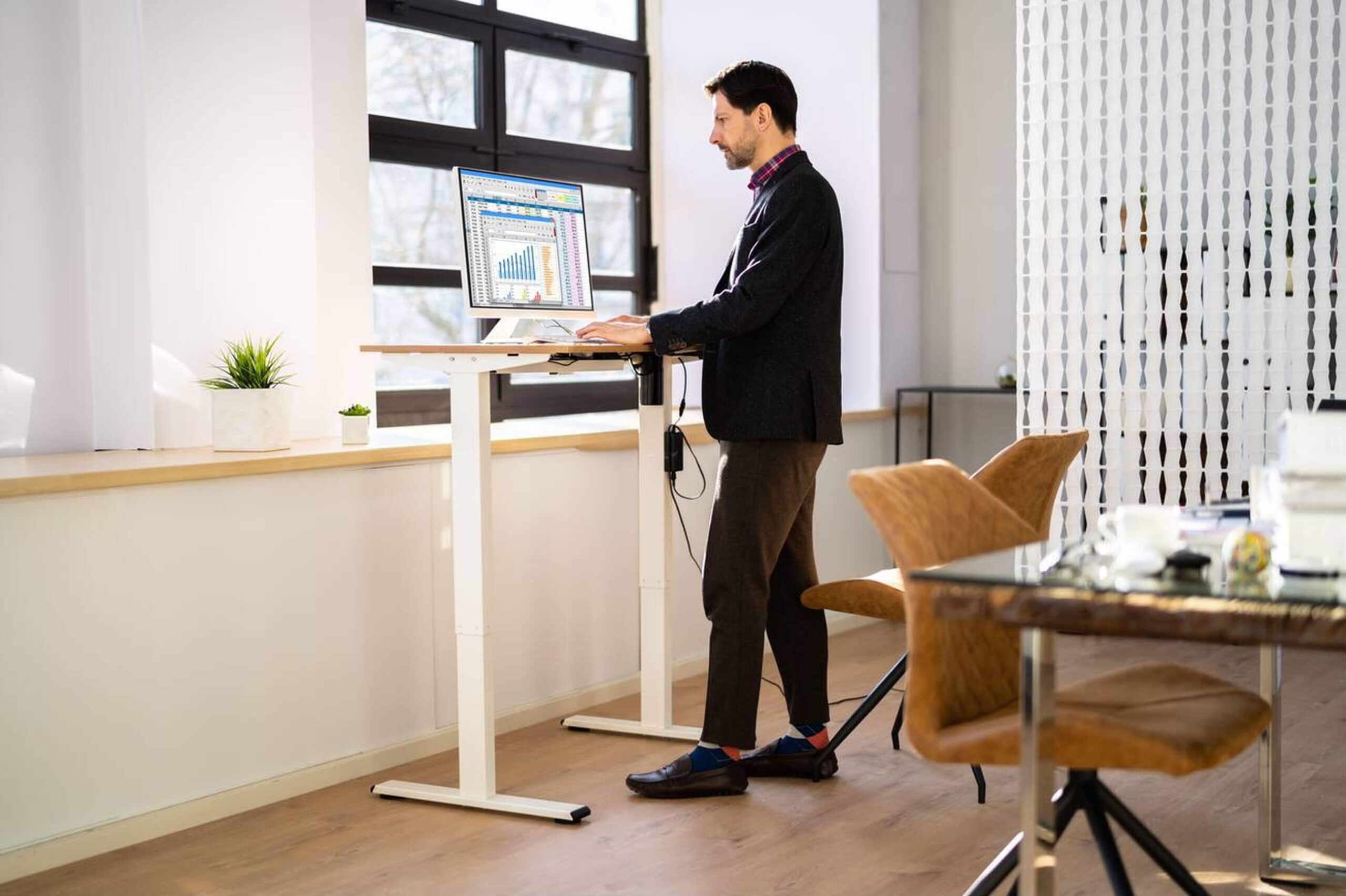Ergonomic desk height is critical for creating a comfortable and healthy work environment. Proper desk height ensures that you can work efficiently without causing strain to your body, particularly your neck, back, and wrists.

Why Ergonomic Desk Height Matters
The right desk height can significantly impact your overall comfort and health while working. An improperly adjusted desk can lead to various musculoskeletal problems, including back pain, neck strain, and carpal tunnel syndrome. Therefore, understanding and implementing the correct desk height is vital.
Standard Desk Height
In the USA, the standard desk height is typically between 28 and 30 inches, which accommodates the average person between 5’8″ and 5’10. However, this standard may not be suitable for everyone, especially for those who are significantly taller or shorter.
Factors to Consider When Choosing Desk Height
Your Height
Your height is the primary factor in determining the appropriate desk height. Here are some guidelines:
- For individuals around 5’3″, the recommended desk height is approximately 25-26 inches.
- For those who are taller, an adjustable desk or a custom desk height may be necessary to ensure comfort.
Arm and Elbow Position
When sitting at your desk, your arms should rest comfortably at your sides with your elbows at a 90-degree angle. Your forearms should be parallel to the ground, and your wrists should not be bent upwards or downwards while typing.
Leg Position
Your thighs should be parallel to the floor with your feet flat on the ground or on a footrest. There should be enough space under the desk to move your legs freely without obstruction.
Adjusting Desk Height for Comfort
Using Adjustable Desks
Adjustable desks, especially sit-stand desks, provide the flexibility to modify the desk height according to your needs. These desks allow you to switch between sitting and standing positions, promoting better posture and reducing the risk of prolonged sitting.
Fixed Desks
If you have a fixed desk, you can adjust your chair height and use accessories like footrests and monitor stands to achieve ergonomic comfort. Ensure that your chair supports your spine and allows your feet to rest flat on the floor.
Setting Up Your Workspace
Monitor Placement
Your computer monitor should be at eye level, with the top of the screen at or slightly below eye level. The monitor should be an arm’s length away from your face to reduce eye strain.
Keyboard and Mouse Position
Place your keyboard directly in front of you with your mouse nearby. Your wrists should be straight and your upper arms close to your body. Consider using a wrist rest to maintain a neutral wrist position.
Chair Height
Adjust your chair so that your feet are flat on the floor and your thighs are parallel to the ground. If necessary, use a footrest to achieve the correct leg position. Ensure that your chair provides adequate lumbar support to maintain the natural curve of your spine.
Tips for Maintaining Ergonomic Comfort
- Take regular breaks to stand, stretch, and move around.
- Use ergonomic accessories like wrist rests, footrests, and monitor stands to enhance comfort.
- Maintain a tidy and organized workspace to avoid unnecessary reaching and straining.
Conclusion
Proper desk height is crucial for ergonomic comfort and preventing strain and injury. By considering your height, arm and leg positions, and using adjustable furniture and accessories, you can create a workspace that promotes health and productivity. Regular adjustments and breaks are essential to maintaining long-term ergonomic comfort.




